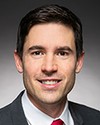There are a number of factors. One is that international markets, tariffs, are affecting not just this fishery but many. The fact that this had been closed.... There is also market awareness that needs to be developed, and markets need to be penetrated in that regard.
We are, indeed, investing and partnering with others to develop new product lines. That is something we're working with harvesters on.
Many other challenges are not unique to redfish in terms of the cost of fuel, labour, at-sea observers and that sort of thing. That's in part why we made significant changes to our management approach this past year, to address those and to provide additional funding through the AFF to those harvesters.




